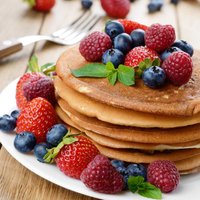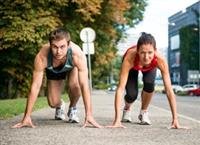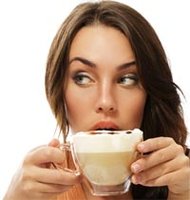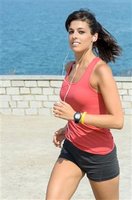Using Gels during the Marathon
"Should I eat gels during a marathon?" We get asked this question frequently. The short answer is: probably!
If you've ever hit the wall in a marathon, it's most often due to running out of carb energy. For the typical marathoner, this happens somewhere between mile 18-22. It's caused by depletion of glycogen reserves, stored in the liver and muscles. Hitting the wall makes it very difficult to keep running and most runners slow to a dizzy walk.
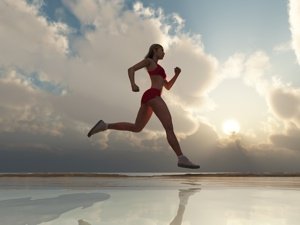
That's what makes the marathon distance extra difficult. Most people will need to ingest some calories to run well throughout the event. You can do this with drinks and with food. You don't have to use gels, but they provide a very convenient and great source of energy.
Racing gels are primarily carbohydrates, used by the body as a quick fuel source. Gels are typically composed of one or multiple sugar types like maltodextrin, sucrose, and fructose.
Yes, these are sugars! And sugar has a bad reputation, particularly when eaten in processed form. That's because the sugar is taken out of a food with nutrients (like corn), and for a general diet, it is much better to eat whole foods. However, in a marathon you don't need well-rounded nutrient-dense food. In fact, for most people, whole foods won't typically digest well while you're running. That's why gels are primarily carbs, you can digest these more easily, and you need these to sustain the energy demands of a marathon.
Maltodextrin is a processed complex carb. In the U.S. it is typically produced from the starches in corn, and in the Europe from wheat. It provides a moderately sustained energy source for the body. Maltodextrin is also typically easier on the stomach than simple sugars.
Sucrose and fructose are simple sugars. Sucrose is most commonly known as table sugar. It's a molecule formed from one glucose and one sucrose molecule. It provides a quick, but short-lasting, boost of carb energy. On its own, fructose is digested slowly, but it's done along a different pathway, so a bit of fructose can improve the overall carb efficiency of a gel.
Gels may also contain a small amount of caffeine. Caffeine can give you a performance boost, which can really help when those miles start to add up later in a marathon.Gels with caffeine typically contain 20 mg or 40 mg. To put that in perspective, a caffeinated soda contains 40-55 mg of caffeine and a cup of coffee has about 100 mg.
Most Popular Gels
"How many gels do I need to eat during a marathon?" Another great question, and one that has no definitive answer. How much you need is dependent upon how much you tap into your glycogen stores during the race. The harder you run in the early portion of the race will mean that you're burning more glycogen and will therefore need more calories. If you run easier in the early miles, you'll burn a higher percentage of fat. Also, having trained well for the marathon, particularly with several long runs, will give you deeper glycogen stores and a better glycogen:fat burning ratio.
Yes, you can eat too many gels during a race. Most runners can't digest more than about 300 calories an hour while they are running. If you consume more than that you're going to run into indigestion and possibly vomiting. It won't necessarily end your race, but you certainly won't have an optimal performance.
The best way to determine how many gels you need to eat for a marathon is to experiment with your long runs. A reasonable place to start is to eat one gel per 6 miles. Which means you'd eat 4 in a marathon. If you're drinking only water, you might try to bump that up to 6. If you're drinking only high calorie electrolyte beverages, you might only eat 2.

